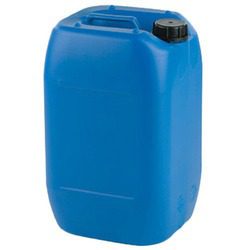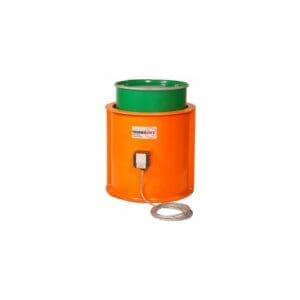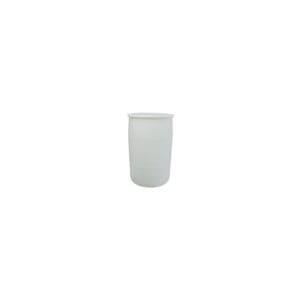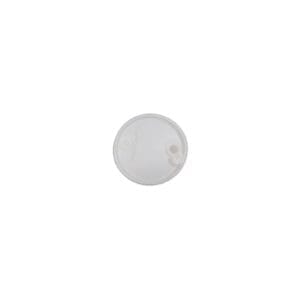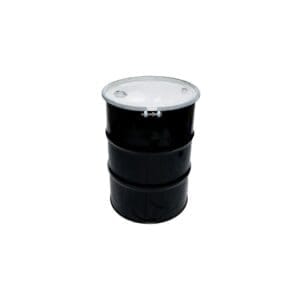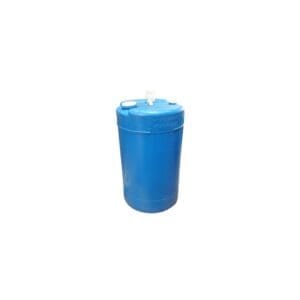Introduction to High pH Membrane Cleaners
High pH membrane cleaners play a crucial role in maintaining the efficacy and longevity of various membrane systems, particularly those designed for reverse osmosis (RO), nanofiltration (NF), and ultrafiltration (UF). These specialized cleaning agents are formulated to address a range of contaminants that can accumulate on membrane surfaces, impeding performance and reducing throughput. These cleaners effectively dissolve and remove challenging fouling substances, such as oils, organic compounds, silica scales, and biological slimes, by employing high pH formulations.
The chemical composition of high pH membrane cleaners typically includes alkaline agents, surfactants, and complexing agents. The elevated pH levels enable them to interact with and disrupt the structures of organic and inorganic deposits. For instance, alkaline conditions can saponify oily residues, while surfactants help disperse and emulsify grease, enhancing removal efficiency. Additionally, complexing agents may bind to metal ions, preventing precipitation and aiding in removing scale deposits. This multi-faceted approach is essential for effective membrane cleaning and restoration.
High pH cleaners are particularly valuable when membrane fouling leads to decreased operational efficiency, increased energy consumption, and frequent maintenance downtimes. In industries such as water treatment, food processing, and pharmaceuticals, where membrane technology is integral, ensuring optimal performance is essential for meeting production targets and regulatory standards. By regularly utilizing high pH membrane cleaners, operators can mitigate the impact of fouling, extend membrane life, and ultimately reduce operational costs.
High pH membrane cleaners are indispensable tools in membrane cleaning applications. Their ability to tackle a broad spectrum of contaminants and restore membrane functionality underscores their importance in various industrial and environmental contexts.
How High pH Membrane Cleaners Work
High pH membrane cleaners operate through a distinct mechanism that leverages the power of alkalinity to effectively tackle a variety of contaminants that can accumulate on membrane surfaces. The elevated pH level aids in breaking down organic and inorganic materials, making it a crucial factor in the cleaning process. As the alkaline solution comes into contact with membrane surfaces, it initiates a reaction that dislodges particulate matter, such as oils, grease, and other stubborn residues that can impede membrane performance.
Organic dispersants play a significant role in formulating high pH cleaners. These surfactants enhance the solubility of various contaminants, allowing them to be readily removed from the membrane surface. By reducing the surface tension between the dirt and the cleaning solution, organic dispersants enable a more thorough dispersal of colloidal clay deposits, often resistant to more straightforward cleaning agents. This interaction not only aids in lifting dirt away but also facilitates the removal of biofilms formed by microorganisms trapped in surface layers.
Furthermore, the effectiveness of biocides is enhanced in high pH environments. The alkalinity improves the penetration of biocidal agents into stubborn films that can harbor bacteria and other pathogens. When applied sufficiently, these high pH cleaners penetrate deep into the layers of deposits, effectively breaking them down and rendering them easier to wash away. As the contaminants dissociate, they are removed during the rinsing process, resulting in improved membrane fouling removal and overall cleanliness.
Overall, the unique properties of high pH membrane cleaners, particularly their ability to harness alkalinity and utilize organic dispersants, play a pivotal role in restoring membrane efficiency and functionality. The interplay between these components ensures that even the most resilient contaminants can be effectively diminished, thereby extending the life and performance of membrane systems.
Benefits of Using High pH Membrane Cleaners
Using high pH membrane cleaners in industrial and municipal water treatment systems presents many advantages that fundamentally enhance operational efficiency. One of the primary benefits is the improved longevity of membrane systems. High pH cleaners effectively disrupt and remove organic foulants that accumulate on membrane surfaces over time. This proactive approach prevents the irreversible damage often caused by contaminants, thus extending the life expectancy of the membranes and optimizing their performance.
In addition to promoting membrane longevity, high pH membrane cleaners significantly augment cleaning efficiency. Their elevated pH levels aid in neutralizing and solubilizing various foulants, including oils, greases, and biofilms. This enhanced cleaning action reduces the frequency of cleaning cycles required and ensures a thorough cleansing process. As a result, operators can achieve optimal permeability and recover flux rates that may have been compromised by fouling, ultimately leading to improved water quality output.
Moreover, employing these high pH cleaners reduces downtime during maintenance operations. These cleaning agents’ effective and rapid action minimizes the operational interruptions associated with routine cleaning procedures. Consequently, facilities can maintain a higher level of productivity as less time is spent on maintenance-related activities. This efficiency is particularly crucial in environments where continuous operation is necessary, presenting an additional layer of practicality in applying high pH cleaners.
Finally, the cost-effectiveness of regularly maintaining membranes using high pH cleaners warrants attention. Although the initial investment in high pH cleaners may seem substantial, avoiding extensive repairs or replacements due to premature membrane failure generates cost savings. By facilitating ongoing maintenance, these cleaning agents effectively protect the financial interests of facilities while promoting sustainable operations.
Choosing the Right High pH Membrane Cleaner
Selecting the appropriate high pH membrane cleaner is crucial for membrane systems’ effective maintenance and longevity. Various factors come into play when determining the most suitable cleaner for specific applications. First and foremost, it is essential to understand the composition of the high pH cleaners available in the market. These cleaners often contain caustic soda or sodium hydroxide, which help break down organic foulants and scale on membranes.
When evaluating the different types of high pH cleaners, it is vital to consider the specific contaminants your membrane system faces. For instance, some cleaners excel in addressing organic materials, while others are more effective against inorganic scale. High pH cleaners are generally favored for applications involving protein fouling, oil, or grease, as their elevated alkalinity promotes effectively removing these contaminants. Therefore, knowing the fouling characteristics of your membrane system will guide your choice of cleaning agent.
Matching the high pH membrane cleaner with the membrane type in use is equally important. For instance, polyamide reverse osmosis membranes may be susceptible to damage from overly aggressive high pH cleaners, making it crucial to opt for milder formulations or alternative cleaning methods that respect the membrane’s integrity. Compatibility can also vary with the material of the membrane, such as polyethersulfone or ceramic. Thus, always refer to the manufacturer’s guidelines when selecting a cleaner.
Additional factors to consider include the concentration of the cleaner, the cleaning process employed, and the operational conditions of the system. The cleaning frequency and the operational environment also significantly influence the selection process. Employing a systematic approach when determining the most suitable high pH membrane cleaner can ensure optimal system performance and extend the lifespan of your membranes.
Where to Buy High pH Membrane Cleaners
When seeking high-pH membrane cleaners, it is essential to consider various online and offline purchasing options. Numerous suppliers and manufacturers specialize in providing chemical cleaning agents for membrane applications, ensuring users access effective products tailored to their specific needs. Online platforms such as reputable industrial supply websites, e-commerce giants, and specialized chemical distributors are excellent places to start your search. These platforms typically offer detailed product descriptions, customer reviews, and the capability to compare different brands easily.
In addition to online options, brick-and-mortar stores that focus on industrial cleaning supplies or chemical products can readily have high-pH membrane cleaners. These stores often boast knowledgeable staff who can provide guidance and answer queries regarding product selection based on cleaning requirements. It’s advisable to visit well-stocked suppliers where you can inspect product labels and inquire about the individual features of each cleaner.
While exploring purchasing options, it’s essential to consider the supplier’s reputation. Look for manufacturers with a history of producing high-quality chemicals and offering safety and usage information. This can be particularly vital when comparing high-pH cleaners to low-pH alternatives. High pH membrane cleaners are specifically practical for certain types of fouling and scaling, while low pH options might be more suited for different cleaning scenarios. Matching the right product with the specific application is crucial for effectiveness and membrane longevity.
In conclusion, whether you are shopping online or at a local supplier, understanding your cleaning needs, product efficacy, and manufacturer reputation will enhance your purchasing decision. Knowing when to opt for high-pH membrane cleaners over their low-pH counterparts is essential for maintaining optimal membrane performance.

